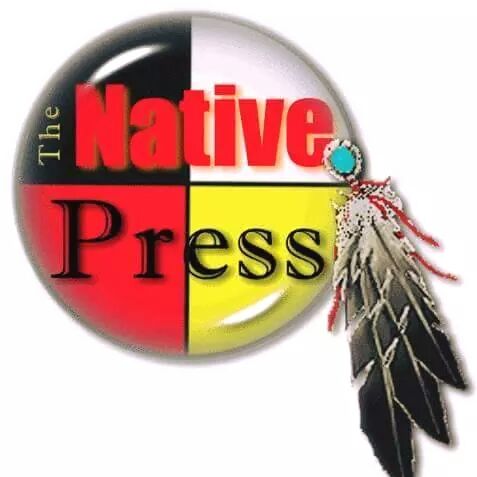The Manitoba government made a “political compromise” in its decision to issue a reduced number of moose hunting licences to non-Indigenous hunters in northern parts of the province earlier this year, a lawyer representing a First Nation in the area has argued in court.
Justice Brian Bowman of the Manitoba Court of King’s Bench is weighing two opposing arguments that allege it was unreasonable for the provincial government to approve a 75 per cent reduction to moose draw licences for four of 62 of Manitoba’s game hunting areas in northern parts of the province last July.
The Manitoba Wildlife Federation, which defends the interests of licensed hunters, has taken the province to court for a judicial review of the decision, alleging it was not based on scientific data.
Pimicikamak Cree Nation filed an application for a court injunction, which seeks to quash Natural Resources Minister Jamie Moses’s decision to issue the licences, alleging they violate its rights under provincial laws, Treaty 5 and the 1977 Northern Flood Agreement.
Byron Williams, the director of Winnipeg’s Public Interest Law Centre who is representing Pimicikamak, alleges Manitoba’s issuance of the licences breached a constitutional obligation to ensure that First Nations people have the right of top priority to hunt for food.
“They made a political compromise, of leaving some for licensed hunters, even though they didn’t know what [Pimicikamak’s] food need was or whether the population was sustainable,” he told the court Tuesday morning.
The traditional territory of Pimicikamak, also known as the Cross Lake Resource Area, spans nearly 15,000 square kilometres and portions of four of Manitoba’s GHAs, including two of four GHAs subject to the 75 per cent licence reduction.
The province has not surveyed the moose populations in those GHAs for over a decade, Williams said.
Pimicikamak is a “rapidly growing” community, with over 8,000 members living on reserve, and hunters there have been reporting less and less moose sightings in recent years, he said.
Pimicikamak, alongside Manitoba Keewatinowi Okimakanak — an organization representing just over two dozen First Nations in northern Manitoba — had been pushing the provincial government to consult with them on the hunting issue from 2022 to April 2024, Williams said.
“Manitoba was aware of these requests and was not acting upon them,” he said.
Dated data ‘does not cut it’: lawyer
A ministerial briefing note from June acknowledged that the issue would require “large efforts” from the province, Williams alleged.
The briefing note said the province could either stick to the status quo and “continue operating against its legal obligations,” or commit to working with the First Nations and face additional costs, time pressures and backlash from licensed hunters and outfitters, he alleged.
Jeremy McKay, another lawyer representing Pimicikamak, said Premier Wab Kinew suggested in a meeting with MKO around that time that the province could “carve out” Pimicikamak’s traditional territory from Manitoba’s game hunting areas as a solution to the issue.
Minister Moses later called Pimicikamak Chief David Monias after the licence reduction was announced, saying the province wasn’t prepared to make that move yet, but could do so in 2025, according to Williams.
“While Manitoba’s approach may be encouraging — potentially — for next year, it does not protect Pimicikamak rights this year,” he said.
Instead, Pimicikamak hunters are forced to travel outside of their traditional territory to hunt moose, incurring significant financial and cultural losses, he said.
Meanwhile, Jonathan Andrews, a lawyer representing the Manitoba Wildlife Federation, argued the reduction affects licensed hunters in Manitoba more directly than it does treaty hunting rights, as First Nations hunters do not require licences to harvest.
He said the province’s licence reduction was unreasonable, unfair and made in an “evidentiary vacuum.”
Although there were 100 moose draw licences issued across the four GHAs this year, Andrews says two hunters both share one moose tag, and moose hunting success rates in the province have been below 40 per cent.
Andrews also argued that the letters Pimicikamak and MKO sent to the province mainly opposed the government’s ability to issue hunting licences on its traditional territory, and had only implied concerns about the moose populations.
He said it’s the province’s responsibility to determine the state of moose populations if there are concerns of declines.
“Survey data from 10 years ago does not cut it,” he said.
Province’s lawyers to respond
Andrews also pointed to cross-examinations of Marcia Arlt, the director of Manitoba’s wildlife branch, who he said confirmed that Pimicikamak has not disclosed to the province how many moose that its members harvest or require each year — data that would help conservation efforts.
He says the federation recognizes treaty hunting rights, but challenges their scope. The federation desires a “shared, co-managed approach” to Manitoba’s conservation efforts, and feels that anything but that would be “a recipe for disaster,” Andrews said.
“This case is proof,” he said.
The hunters who received moose draw licences in those two GHAs that intersect with Pimicikamak’s traditional territory were able to harvest in the area from Sept. 16 to Oct. 13, and will again from Dec. 2 to Dec. 15 this year, according to the annual hunting guide.
The province’s lawyers are set to respond to both applications in court on Wednesday.

